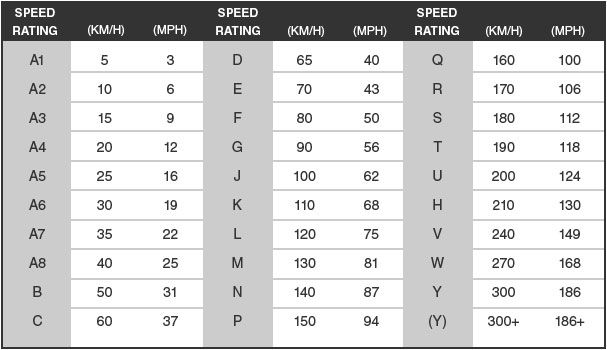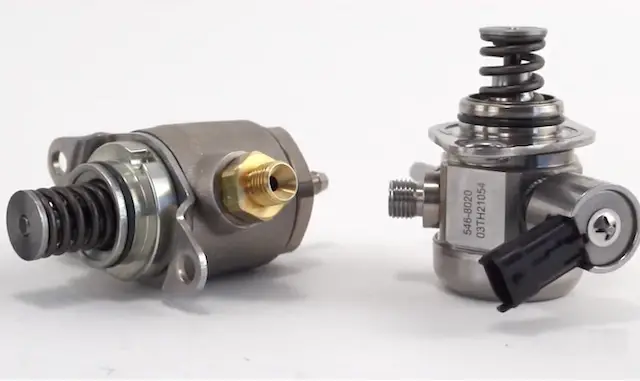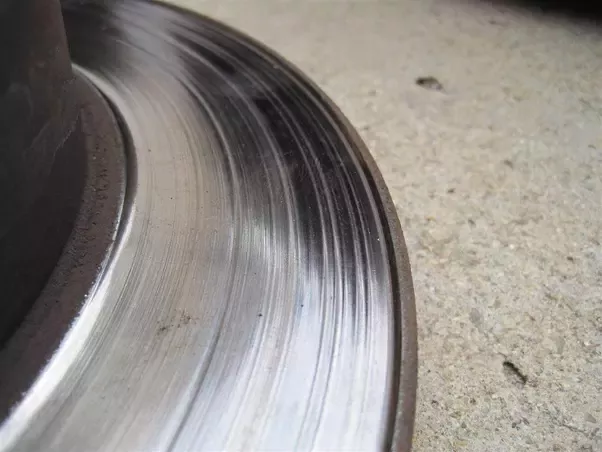Welcome to the world of tires!
In this article, we will be comparing the speed ratings of T and H tires.
The speed rating of a tire is one of its most important characteristics.
It determines the maximum speed at which the tire can safely carry a load for an extended period under ideal conditions.
T and H are two of the most common ratings for sedans.
But what are the differences between them?
Which one is better for your car?
We will answer these questions and more in this comprehensive comparison.
So, buckle up and let’s dive into the world of tires! 🚗🔥
What Is The key Differences Between Speed Rating Tires T Vs. H?
Let’s delve into the key differences between T-rated and H-rated tires based on the information provided:
1: Speed Rating
- T-rated tires: These tires are rated for a maximum speed of 118 mph (190 km/h).
- H-rated tires: These tires can withstand speeds of up to 130 mph (210 km/h).
The primary distinction here is that H-rated tires are designed to handle higher speeds compared to T-rated tires. If your driving habits involve sustained high speeds, opting for H-rated tires might be more suitable.
2: Load Index
- T-rated tires: Typically have a lower load index.
- H-rated tires: Generally come with a higher load index.
The load index indicates the maximum load-carrying capacity of the tire. H-rated tires, with their higher load index, are capable of carrying more weight than T-rated tires. This can be an important factor, especially if your vehicle often carries heavier loads.
3: Resistance Capacity of Friction and Heat

- T-rated tires: Have a lower resistance capacity to friction and heat.
- H-rated tires: Exhibit a higher resistance capacity to friction and heat.
H-rated tires are designed to dissipate heat more effectively and withstand higher levels of friction. This makes them more suitable for high-performance driving and extended periods of high-speed travel.
4: Handling Ability
- T-rated tires: Generally offer good handling but may not be as responsive as H-rated tires.
- H-rated tires: Provide better handling and cornering performance.
H-rated tires are designed with enhanced performance characteristics, making them more suitable for drivers who prioritize superior handling and responsiveness, particularly during maneuvers like cornering.
Is H or T speed rating better?
The choice between H and T speed ratings depends on your specific driving needs and habits. There isn’t a definitive answer about which is “better,” as it largely depends on the type of driving you do and the conditions you encounter. Here are some considerations for both:
Speed Requirements
- If you regularly drive at speeds below 118 mph (190 km/h), which is the maximum speed for T-rated tires, then T-rated tires should be sufficient.
- If you frequently drive at speeds between 118 mph (190 km/h) and 130 mph (210 km/h), you might consider H-rated tires, which are designed to handle higher speeds.
Important: What is the Recommended Tire Pressure for a Lexus RX 350?
Load-Carrying Capacity
- If your vehicle typically carries heavier loads, H-rated tires, with their higher load index, may be more suitable for your needs.
- For standard driving conditions and average loads, T-rated tires might provide an adequate load-carrying capacity.
Performance and Handling
If you prioritize better handling and cornering performance, especially during high-speed maneuvers, H-rated tires are designed to offer superior performance in these aspects.
For everyday driving at standard speeds and without the need for high-performance handling, T-rated tires may be more than adequate.
Cost
Generally, T-rated tires are less expensive than H-rated tires. If your driving conditions and requirements align with the capabilities of T-rated tires, you may find them to be a more cost-effective option.
What is the difference between 82h and 82t?
The combination of numbers and letters in a tire’s sidewall code provides information about its size, load-carrying capacity, and speed rating. In the examples you’ve given (82H and 82T), the numbers (82) represent the load index, and the letters (H and T) indicate the speed rating.
Load Index (82)
- The number “82” in both codes represents the load index, indicating the maximum load-carrying capacity of the tire. However, to determine the actual load capacity in pounds or kilograms, you would need to refer to a load index chart specific to the tire manufacturer.
Speed Rating
- 82H: The letter “H” in the speed rating indicates that the tire is rated for a maximum speed of 130 mph (210 km/h).
- 82T: The letter “T” in the speed rating indicates a maximum speed of 118 mph (190 km/h).
What is the difference between 110t and 110h?
The tire codes “110T” and “110H” follow a similar format, where the number represents the load index and the letter indicates the speed rating. Here’s a breakdown of the differences:
Load Index (110)
The number “110” in both codes signifies the load index. The load index provides information about the maximum load-carrying capacity of the tire. To determine the actual load capacity in pounds or kilograms, you would need to refer to a load index chart specific to the tire manufacturer.
Speed Rating
- 110T: The letter “T” in the speed rating indicates a maximum speed of 118 mph (190 km/h).
- 110H: The letter “H” in the speed rating indicates a maximum speed of 130 mph (210 km/h).
Speed Rating Tires T vs H Snow
The speed rating of a tire is one of its most important characteristics. It indicates the highest speed at which a tire can safely carry a load for an extended period under ideal conditions.
Tires with sufficient speed ratings for your vehicle might reduce risks of safety hazards, including tire breakdown and fuel economy loss.
The two most common speed ratings for sedans are T and H.
Here are the key differences between speed rating T and H:
- Speed rating: T-rated tires are rated for a maximum speed of 118 mph (190 km/h), while H-rated tires can withstand speeds of up to 130 mph (210 km/h).
- Load index: Tires with higher load indexes can carry more weight. H-rated tires typically have a higher load index than T-rated tires.
- Resistance capacity of friction and heat: H-rated tires have a higher resistance capacity of friction and heat than T-rated tires.
- Handling ability: H-rated tires offer better handling and cornering performance than T-rated tires.
Should I buy H or T tires?
The choice between H and T speed-rated tires depends on your driving needs and the type of vehicle you own. H-rated tires are rated for a maximum speed of 130 mph (210 km/h) and offer better handling and cornering performance than T-rated tires, which are rated for a maximum speed of 118 mph (190 km/h). If you own a high-performance sports car or luxury sedan, H-rated tires might be a better option for you. On the other hand, if you own a family sedan or van, T-rated tires might be more suitable.
Also Read: Can BMW run-flat tires be patched? Everything You Need To Know!
Can I mix H and T tires?
Mixing tires with different speed ratings is generally not recommended, as it can affect the handling and stability of your vehicle. However, if you must combine speed ratings, place the lower-rated tires on the front axle irrespective of whether your car is front, rear, or four-wheel drive. This is done to prevent an oversteering situation. Please remember that all tires must be suitable for the vehicle, and you should not drive faster than the speed rating of your lowest-rated tire.
Do T rated tires last longer than H rated tires?
According to a treadwear test conducted by Consumer Reports, H-rated tires have a shorter lifespan than T-rated tires. The average lifespan of H-rated tires was 49,180 miles, while that of T-rated tires was 61,080 miles. However, it’s important to note that the lifespan of a tire depends on several factors, including driving habits, road conditions, and maintenance. Therefore, it’s difficult to make a generalization about the lifespan of H-rated and T-rated tires.
What is the best speed rating for Tyres?
The best speed rating for tires depends on your driving needs and the type of vehicle you own. The speed rating indicates the maximum speed at which a tire can safely carry a load for an extended period under ideal conditions. Tires with sufficient speed ratings for your vehicle might reduce risks of safety hazards, including tire breakdown and fuel economy loss.
Here is a brief overview of the speed rating codes:
- M: Approved for speeds up to 87 mph (140 km/h).
- N: Approved for speeds up to 81 mph (130 km/h).
- P: Approved for speeds up to 93 mph (150 km/h).
- Q: Approved for speeds up to 99 mph (160 km/h).
- R: Approved for speeds up to 106 mph (170 km/h).
- S: Approved for speeds up to 112 mph (180 km/h).
- T: Approved for speeds up to 118 mph (190 km/h).
- U: Approved for speeds up to 124 mph (200 km/h).
- H: Approved for speeds up to 130 mph (210 km/h).
- V: Approved for speeds up to 149 mph (240 km/h).
- W: Approved for speeds up to 168 mph (270 km/h).
- Y: Approved for speeds up to 186 mph (300 km/h).
FAQs
Can I use T-rated tires on a car that requires H-rated tires?
It is not recommended to use T-rated tires on a car that requires H-rated tires. Doing so can compromise your car’s handling and performance, and may even be illegal in some states.
What is the maximum speed rating for tires?
The maximum speed rating for tires is Y, which is rated for speeds up to 186 mph.
What is the difference between speed rating and load index?
Speed rating and load index are two important characteristics of tires. Speed rating determines the maximum speed at which the tire can safely carry a load for an extended period under ideal conditions, while load index determines the maximum weight that the tire can support.
What is the difference between summer and all-season tires?
Summer tires are designed for optimal performance in dry and wet conditions, while all-season tires are designed to perform well in a variety of weather conditions, including light snow.
What is the difference between radial and bias-ply tires?
Radial tires have a more flexible sidewall and provide better fuel economy, while bias-ply tires have a stiffer sidewall and provide better load-carrying capacity .
What is the difference between run-flat and regular tires?
Run-flat tires are designed to allow you to continue driving for a short distance after a puncture or blowout, while regular tires will deflate immediately .
What is the difference between high-performance and touring tires?
High-performance tires are designed for sports cars and provide better handling and performance, while touring tires are designed for sedans and provide a comfortable ride and good fuel economy .
How often should I replace my tires?
It is recommended to replace your tires every 6 years, regardless of the amount of tread remaining. This is because tires can degrade over time due to exposure to heat, sunlight, and other environmental factors.
Conclusion
We hope that this comprehensive comparison of speed rating tires T vs. H has been informative and helpful.
We have discussed the differences between T and H speed ratings, which one is better for your car, and answered some frequently asked questions.
It is important to remember that the speed rating of a tire is one of its most important characteristics, and it determines the maximum speed at which the tire can safely carry a load for an extended period under ideal conditions.
So, when choosing between T and H speed ratings, consider your driving needs and the type of roads you frequently drive on.
Thank you for reading, and we hope you have a safe and enjoyable driving experience!




